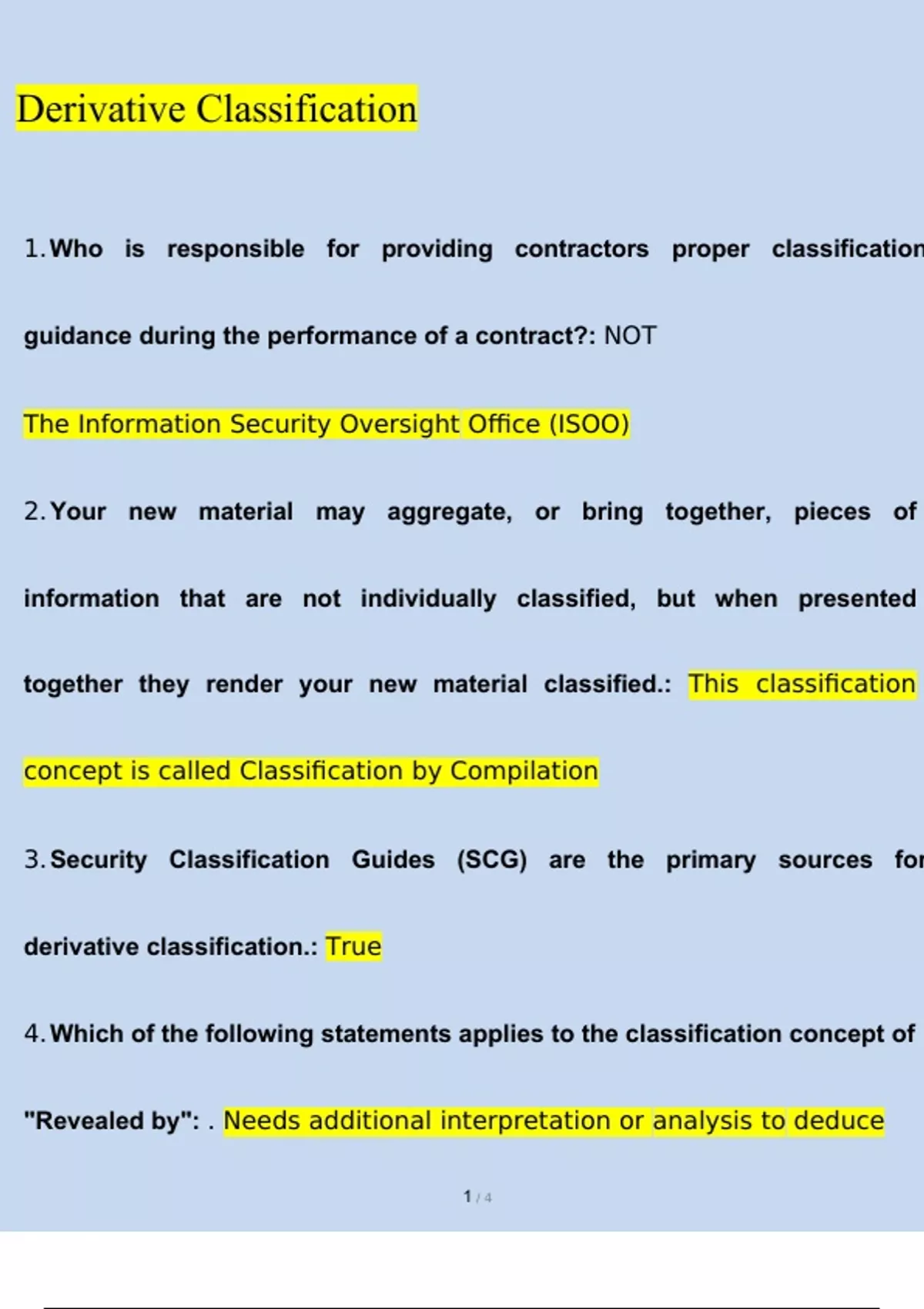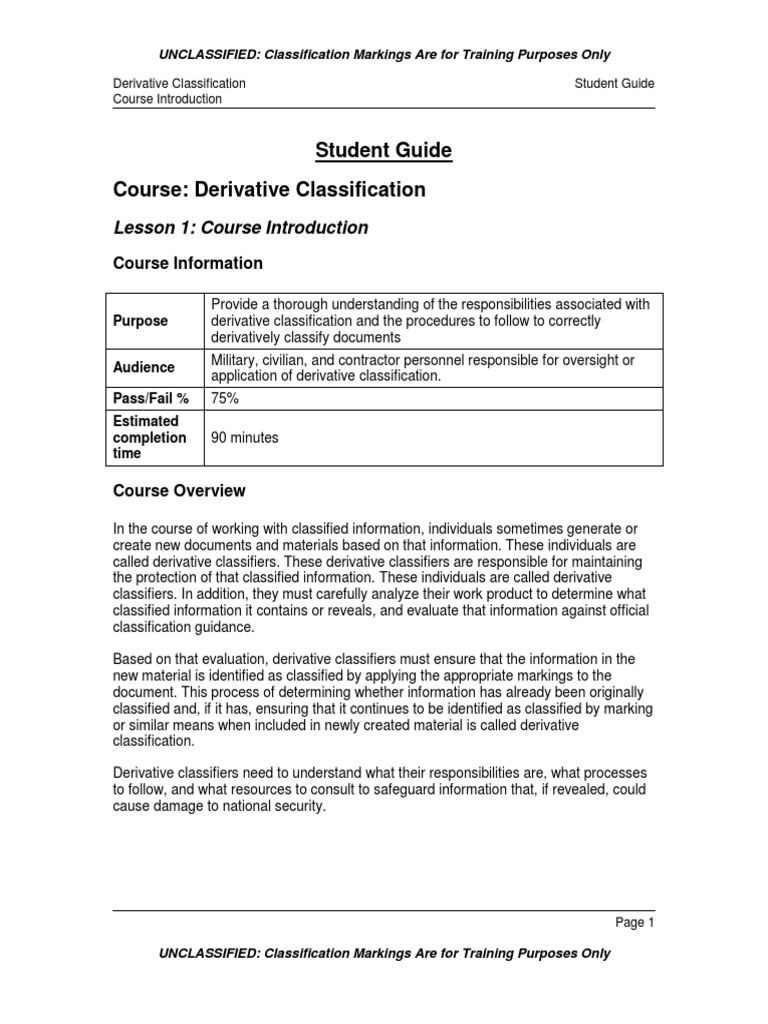In the realm of document management and information security, the concept of derivative classification plays a crucial role. This method involves classifying new documents based on the classification status of previously classified information. The primary goal is to ensure that sensitive information remains protected while allowing for efficient handling of related materials. Understanding derivative classification is essential for anyone involved in creating, managing, or reviewing documents that contain classified information.
What Is Derivative Classification?
Derivative classification refers to the process of applying a classification level to a new document based on the classification of the original information it contains. This means that if a document includes information that has already been classified, the new document must also be classified at the same level. This practice ensures consistency and helps maintain the integrity of classified information.
For example, if a report contains classified data about national security, any subsequent document that references or reproduces this data must also be classified as confidential or secret, depending on the original classification level. This approach prevents the unauthorized disclosure of sensitive information and ensures that all related documents are appropriately safeguarded.
Why Is Derivative Classification Important?
Derivative classification is vital for several reasons. First, it helps maintain the confidentiality of sensitive information by ensuring that all documents containing such information are properly labeled and handled. This is particularly important in government agencies and organizations where the protection of classified information is paramount.
Second, derivative classification promotes accountability and transparency. By clearly labeling documents, individuals and organizations can track the origin and handling of classified information, making it easier to identify and address any potential breaches or mishandlings.
Third, derivative classification supports compliance with legal and regulatory requirements. Many laws and regulations mandate the proper classification of documents containing sensitive information. Failure to comply with these requirements can result in severe consequences, including legal penalties and damage to an organization’s reputation.
How Does Derivative Classification Work?
The process of derivative classification typically involves the following steps:
-
Identify Classified Information: The first step is to determine whether the information being used in a new document has already been classified. This may involve reviewing existing documents, databases, or other sources of information.
-
Determine Classification Level: Once the presence of classified information is confirmed, the next step is to determine the appropriate classification level. This could be confidential, secret, or top secret, depending on the nature and sensitivity of the information.
-
Apply Classification to New Document: The identified classification level is then applied to the new document. This involves adding the appropriate classification label to the document and ensuring that it is stored and handled according to the established security protocols.
-
Maintain Records: It is essential to maintain records of all classified documents, including the source of the information and the classification level applied. This helps in tracking the history and handling of classified information.
-
Review and Update: As information evolves, it may be necessary to review and update the classification of documents. This ensures that all documents remain appropriately classified and that sensitive information is not left unprotected.
Challenges in Derivative Classification
Despite its importance, derivative classification can present several challenges. One common issue is the potential for errors in identifying and classifying information. If a document contains classified information but is not properly labeled, it could lead to the unauthorized disclosure of sensitive data.
Another challenge is the need for ongoing training and awareness. Individuals responsible for classifying documents must have a thorough understanding of the classification criteria and procedures. Without proper training, there is a risk of misclassification, which could compromise the security of sensitive information.
Additionally, the complexity of modern information systems can make it difficult to track and manage classified information. With the increasing use of digital documents and cloud storage, it is essential to implement robust security measures to protect classified information from unauthorized access.
Best Practices for Derivative Classification
To ensure effective derivative classification, organizations should follow best practices such as:
-
Implementing Clear Policies: Establish clear policies and procedures for derivative classification. This includes defining the criteria for classification and outlining the responsibilities of individuals involved in the process.
-
Providing Training: Offer regular training to employees on the principles of derivative classification. This helps ensure that everyone understands the importance of properly classifying documents and the consequences of misclassification.
-
Using Technology: Leverage technology to automate and streamline the classification process. This can include using software tools that help identify and classify information based on predefined criteria.
-
Conducting Audits: Regularly audit classified documents to ensure that they are properly labeled and handled. This helps identify any discrepancies or issues that may arise during the classification process.
-
Maintaining Documentation: Keep detailed records of all classified documents, including their classification levels and the sources of the information they contain. This helps in tracking the history and handling of classified information.
Conclusion
Derivative classification is a critical component of document management and information security. By applying the classification level of existing information to new documents, organizations can ensure the protection of sensitive data and maintain compliance with legal and regulatory requirements. While challenges may arise, following best practices and implementing robust policies can help organizations effectively manage the derivative classification process.















More Stories
US Trending News: The History and Legacy of Zoo York in Streetwear Culture
What Is Yodo Para Tiroides and How Does It Affect Thyroid Health?
Understanding ‘You Got That Right’ in The New York Times: Context and Implications